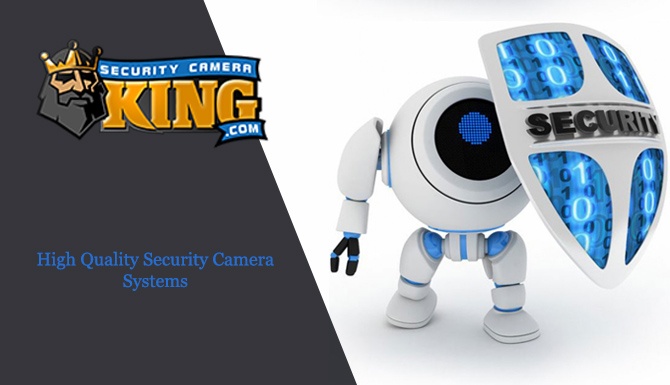Basic Recorder Functions Location Guide
Hey everyone Joe here, and today we wanted to talk, explain, and show you where to access some of the more basic recorder functions for your CCTV system. If you just recently got your recorder set up but were wondering about some of the options and menus, this article and accompanying video will be great for you. If you’re already a CCTV Professional, there’s a good chance you might be aware of a lot of this information. That’s okay because there’s always something new to learn or something you might have missed, so we still encourage you to stick around.
So what do we mean when we say ‘Basic Recorder Functions”? Well, know that our recorders are feature-rich and can help you achieve a lot of different CCTV/security-related goals. Many of those features are advanced and require knowledge of the workings of this type of tech. In short, many of the advanced features for the system should be set up by those with a CCTV background. However, there are many more basic recorder functions that are potentially accessible to any user and should be something that any user of our recorders is able to use easily. These functions include basic ideas like playback, live viewing, accessing network settings, accessing camera quality settings, and more.
With that said, let’s take a look at some of the Basic Recorder Functions.
- Live View –
Of the basic recorder functions, the Live view is the simplest and most straightforward. When you first walk up to your recorder, you should already be in the live view. This is where you can look at active, real-time footage coming into your cameras at that moment in time. In most cases, by default, the live view is going to be the substream of the cameras connected to your recorder. Your cameras can potentially have two streams of video feed. One is for recording, which is high quality at the resolution of the camera called the main Stream. the other, the sub-stream, is a lower resolution and lower bitrate feed designed to reduce the load on live view decoding as well as streaming for remote viewing. If you double click any of your views, it will enlarge and you’ll see the mainstream quality image live. If you right-click the screen, you can choose one of the numbered view options which will change the grid so you can see more, or fewer cameras at once based on your selection. - Playback –
Playback is one of the most important basic recorder functions. playback can be accessed by right-clicking the screen from the live view. Clicking Main Menu, and then after inputting our login information, clicking Playback. From here you can search through footage by camera, date, time, and footage type. You’ll also be able to export footage here using the scissors tool. For more info on this process, check out our local playback export video found here for more info on how to! - Recording Schedule –
Without making any changes, your camera system is designed to record all incoming mainstream footage 24 hours a day seven days a week. In order to set the recorder so that it doesn’t record at certain days or times, and to have it set to record on events like motion detection you’ll need to use the Recording Schedule. This can be found by accessing the main menu and then clicking STORAGE on the bottom of the main menu screen. From here, click the ‘Schedule’ tab. You can edit your schedule here. For more info on this, check out our motion detection setup video! - Camera Quality and Registration Settings-
Your cameras can have their quality settings adjusted to allow you to either increase the image quality and bitrates or lower them. You would do this to achieve a better image or to reduce the amount of hard drive space consumed by recordings thus allowing for a longer record of footage. This can be done on a camera-by-camera basis via the Encoding Settings. You also need to use the camera registry to add new cameras to the recorder. In order to get to the encode settings, and/or the registry from the main menu, click the camera tab option at the bottom of the screen. From here you’ll be in the camera’s settings. By default, you could be in either the registry or the encode settings tabs. Simply alternate between them for whichever choice you need. Check out our videos on adding IP cameras and Camera Quality for more info on how these work! - Networking Settings and P2P –
In order to use features like remote viewing, your recorder will have to be properly set up for the network it is connected to. This could take some networking savvy, so if you’re unfamiliar always make sure to watch our videos on remote viewing. To access the network settings, first, click NETWORK at the bottom of the main menu. From there, you’ll see many options. Your TCPIP settings will allow you to change your recorder’s IP address information. While other options such as EMail, and P2p can be accessed as well, for remote viewing. Check out our videos on p2p for remote viewing setup here!
Thanks for joining us today as we covered where to find the Basic Recorder Functions. We recommend that you Favorite this playlist, and subscribe to our channel as it also contains other video guides on the various functions. For any more info or troubleshooting questions, compatibility or availability inquiries, give our team a call at 561 288 5258, and until next time stay safe!
Related: What’s the difference between DVR and NVR?
Related: What’s the difference between H264 and H265?
Related: IP PTZ Security Cameras – All There is to Know
Related: Resolution, and why does it matter?
Related: What are active deterrence cameras?
Find Us On: Facebook | Twitter | YouTube












